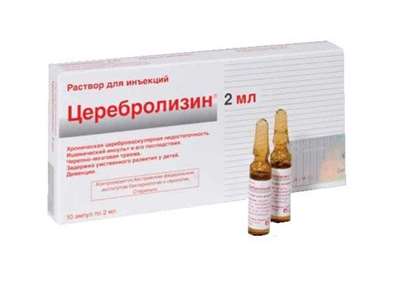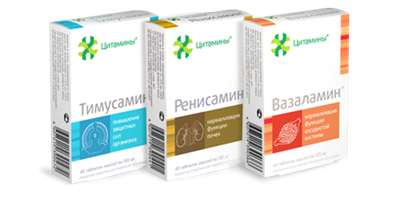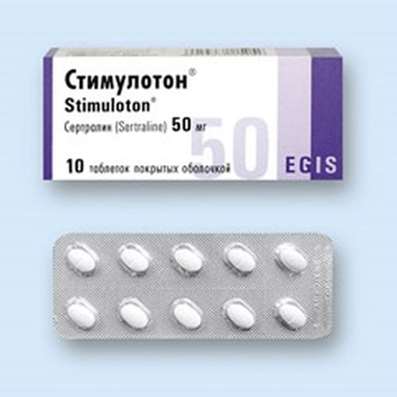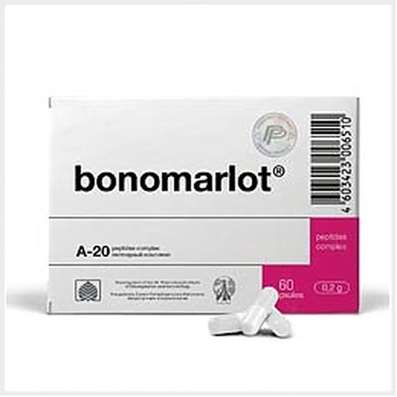Instruction for use: Altevir
I want this, give me price
Dosage form: Solution for injections
Active substance: Interferonum alpha-2b
ATX
L03AB05 Interferon alfa-2b
Pharmacological groups:
Antiviral drugs (excluding HIV)
Interferons
The nosological classification (ICD-10)
A63.0 Anogenital (venereal) warts: Anogenital warts; Venereal warts; Condylomata genital; Condyloma pointed; Externally pointed genital warts; Externally pointed condyloma; Pointed Condyloma; Flat condyloma
B18 Chronic viral hepatitis
B18.2 Chronic viral hepatitis C: Hepatitis C; Recurrence of chronic hepatitis C; Chronic active hepatitis C; Chronic viral hepatitis C; Chronic hepatitis C without cirrhosis; Chronic hepatitis C
C43 Malignant melanoma of skin: Malignant melanoma; Localized malignant melanoma; Localized form of malignant melanoma; Melanoma; Melanoma after surgical resection; Metastatic melanoma; Common metastatic malignant melanoma; Metastasizing form of malignant melanoma; Disseminated malignant melanoma
C46 Kaposi's sarcoma: Kaposi angioreticulosis; Endotheliosarcoma; Kaposi angiosarcomatosis; Kaposi hemangiosarcoma; Kaposi haemorrhagic sarcoma; Kaposi multiple hemorrhagic sarcoma; Kaposi telangiectatic pseudo-sarcoma; Kaposi's Sarcoma in AIDS patients; Varioleiform pustulosis of Kaposi; Kaposi's Sarcoma in AIDS; Kaposi's sarcoma on AIDS; Kaposi's sarcoma on the background of AIDS; AIDS-associated Kaposi's sarcoma
C64 Malignant neoplasm of kidney, other than renal pelvis: Wilms tumor; Kidney Cancer; Metastatic Renal Cell Carcinoma; Renal carcinoma; Inoperable kidney carcinomas; Metastatic kidney carcinoma; Metastatic Renal Cell Carcinoma; Wilms tumor; Wilms swelling; Adenomyosarcoma; Adenomyocystosarcoma; Adenosarcoma of the kidney; Kidney Cancer; Common renal cell carcinoma; Nephroblastoma; Nephroma; Embryonal nephroma; Recurrent carcinoma of the kidney; Birch-Hirschfeld Tumor; Common renal cell carcinoma; Tumors of the kidney
C82 Follicular [nodular] non-Hodgkin's lymphoma: Brill-Simmers disease; Malignant lymphoma; Hepatic Lymphoma; Recurrent non-Hodgkin's lymphoma; Follicular B-cell non-Hodgkin's lymphoma; Follicular lymphoma; Lymphoma of the liver
C83 Diffuse non-Hodgkin's lymphoma: Diffuse B-large-cell non-Hodgkin's lymphoma; Malignant lymphoma; Malignant lymphoma, especially of the histiocytic type; Lymphoblastic non-Hodgkin's lymphoma; Lymphoma non-Hodgkin's diffuse; Hepatic Lymphoma; Recurrence of lymphoma; Recurrent non-Hodgkin's lymphoma; Lymphoma of the liver
C85 Other and unspecified types of non-Hodgkin's lymphoma: Lymphoma of mixed type; Lymphomas from cells of the mantle zone; Malignant lymphoma; Lymphoma non-Hodgkin's disease; Lymphocytic lymphoma
C90.0 Multiple myeloma: Multiple myeloma; Myeloma
C91.4 Hairy-cell leucosis
C92.1 Chronic myeloid leukemia: Myeloleukemia chronic; Myeloid leukemia chronic Ph-negative; Exacerbation of chronic myelogenous leukemia; The subleukemic form of chronic myelogenous leukemia; Chronic leukemia myeloid leukemia; Chronic myeloblastic leukemia; Chronic myelogenous leukemia; Chronic myelomonocytic leukemia; Idiopathic hypereosinophilic syndrome
D10.7 Benign neoplasm of the laryngopharynx: Tumors of the larynx
Composition and release form
Solution for injection 0.5 or 1 ml
Interferon alpha-2b human recombinant 1 million IU; 3 million IU; 5 million ME; 10 million IU; 15 million IU
Excipients: sodium acetate; sodium chloride; Ethylenediaminetetraacetic acid disodium salt; Tween 80; Dextran 40; water for injections
In ampoules, vials (1, 3, 5, 10, 15 million IU) or syringes (3, 5, 10, 15 million IU); In a pack of cardboard 5 or 10 ampoules; 1 or 5 bottles; 1 or 3 syringes.
Description of dosage form
Transparent colorless liquid.
Characteristic
Interferon alfa-2b human recombinant is isolated from Escherichia coli cells, the human interferon alpha-2b gene is embedded in the genetic apparatus.
The polypeptide structure of the molecule, the biological activity and the basic pharmacological properties of the recombinant protein are identical to human interferon alpha-2b.
Pharmachologic effect
Mode of action - Antiviral, immunomodulating, antitumor, antiproliferative.
Pharmacodynamics
Interacting with specific receptors on the cell surface, interferon alpha-2b initiates a complex chain of changes inside the cell, which involves the induction of the synthesis of a number of specific cytokines and enzymes, disrupts the synthesis of viral RNA and the proteins of the virus in the cell. The result of these changes is nonspecific antiviral and antiproliferative activity associated with the prevention of viral replication in the cell, inhibition of cell proliferation and immunomodulatory action of interferon.
Interferon alfa-2b stimulates the process of antigen presentation to immunocompetent cells, has the ability to stimulate the phagocytic activity of macrophages, as well as the cytotoxic activity of T cells and "natural killers" involved in the antiviral response. Prevents the proliferation of cells, especially tumor cells. Has a depressing effect on the synthesis of some oncogenes, leading to inhibition of tumor growth.
Pharmacokinetics
When SC or IM introduction, the bioavailability of interferon alfa-2b is from 80 to 100%. Tmax - 4-12 h, T1 / 2 - 2-6 h respectively. After 16-24 hours after administration, recombinant interferon alpha-2b in serum is not detected. Metabolised in the liver. Alpha interferons can disrupt oxidative metabolic processes, reducing the activity of hepatic microsomal enzymes of the cytochrome P450 system. It is excreted mainly by the kidneys through glomerular filtration.
Indication of the Altevir
In complex therapy in adults:
Chronic viral hepatitis B (without signs of cirrhosis of the liver);
Chronic viral hepatitis C in the absence of signs of hepatic insufficiency (monotherapy or combination therapy in combination with ribavirin);
Papillomatosis of the larynx, genital warts;
Hairy cell leukemia; Chronic myelogenous leukemia; Non-Hodgkin's lymphoma; melanoma; Multiple myeloma; Sarcoma Kaposi against AIDS; Progressive kidney cancer.
Contraindications
Hypersensitivity to recombinant interferon alpha-2b or any of the components of the drug;
Severe history of cardiovascular disease (uncontrolled chronic heart failure, recent myocardial infarction, severe cardiac rhythm disturbances);
Severe renal and / or hepatic insufficiency (including caused by the presence of metastases);
Epilepsy and / or other severe dysfunction of the central nervous system, especially manifested by depression, suicidal thoughts and attempts (including in the anamnesis);
Chronic hepatitis with decompensated liver cirrhosis and in patients with or after previous therapy with immunosuppressants (except for the condition after the completion of short-term therapy with GCS);
Autoimmune hepatitis and other autoimmune diseases, as well as the use of immunosuppressive drugs after transplantation;
Thyroid disease, which cannot be controlled by conventional therapeutic methods;
Decompensated lung diseases (including COPD);
Diabetes mellitus, prone to ketoacidosis;
Hypercoagulation (including thrombophlebitis, pulmonary embolism);
Severe myelosuppression;
pregnancy;
The period of breastfeeding.
Application in pregnancy and breastfeeding
Contraindicated in pregnancy. At the time of treatment should stop breastfeeding.
Side effects
Most often - fever, weakness (are dose-dependent and reversible reactions, disappear within 72 hours after interruption in treatment or its cessation), headache, myalgia, chills, decreased appetite, nausea.
Less often - vomiting, diarrhea, arthralgia, asthenia, drowsiness, dizziness, dry mouth, alopecia, depression, suicidal thoughts and attempts, malaise, increased sweating, taste change, irritability, insomnia, lowering blood pressure.
Rarely - abdominal pain, skin rash, nervousness, skin itching, anxiety, weight loss, dyspepsia, tachycardia, autoimmune thyroiditis. Changes (reversible) laboratory indicators: leukopenia, granulocytopenia, decreased hemoglobin, thrombocytopenia, increased activity of hepatic enzymes.
Interaction
The drug interaction between Altevir ® and other drugs is not fully understood. Caution should be used Altevir ®, along with hypnotics and sedatives, narcotic analgesics and drugs, potentially having a mielosupressive effect.
With the simultaneous administration of Altevir® and theophylline, it is necessary to monitor the concentration of the latter in the serum and, if necessary, change the dosage regimen.
When Altevir ® is used in combination with chemotherapeutic antitumor drugs (cytarabine, cyclophosphamide, doxorubicin, teniposide), the risk of toxic effects increases.
Dosing and Administration
SC, IM, IV.
Treatment should be started by a doctor. Further, with the permission of the doctor, the patient maintaining the dose can inject himself independently (in the case of subcutaneous or intramuscular injection).
In chronic viral hepatitis B – SC or IM in a dose of 5-10 million IU 3 times a week for 16-24 weeks. Treatment is discontinued after 3-4 months of use in the absence of positive dynamics (according to the DNA of the hepatitis B virus).
In chronic viral hepatitis C - SC or IM in a dose of 3 million IU 3 times a week for 6-12 months. In patients with recurrent disease and patients who have not previously been treated with interferon alpha-2b, the efficacy is enhanced by the use of Altevira® in combination with ribavirin. The duration of combined therapy is at least 6 months. Patients with chronic hepatitis C with 1 genotype of the virus and a high viral load who do not have RNA of hepatitis C virus at the end of the first 6 months of serum treatment should be treated with Altevir® for 12 months.
Papillomatosis of the larynx - sc, at a dose of 3 million IU / m2 3 times a week. Treatment begins after surgical (laser) removal of tumor tissue. The dose is selected taking into account the tolerability of the drug. To achieve a therapeutic effect, treatment may be required for 6 months.
Leukemia hairy cell - SC at a dose of 2 million IU / m2 3 times a week (patients after splenectomy and without it). In most cases, the normalization of one or more hematological indicators occurs after 1-2 months of treatment, it is possible to increase the duration of treatment to 6 months. This dosing regimen should be adhered to continuously, unless there is a rapid progression of the disease or the occurrence of symptoms of severe intolerance to the drug.
Chronic myelogenous leukemia is the recommended dose of Altevira® as a monotherapy of 4-5 million IU / m2 per day daily. To maintain the number of leukocytes may require the use of a dose of 0.5-10 million IU / m2. If the treatment allows to control the number of leukocytes, then to maintain hematologic remission the drug should be used at the maximum tolerated dose (4-10 million IU / m2), daily. The drug should be discontinued after 8-12 weeks of treatment, if the therapy did not lead to partial hematologic remission or a clinically significant decrease in the number of white blood cells.
In non-Hodgkin's lymphoma, Altevir® is used as an adjuvant therapy in combination with standard chemotherapy regimens. The drug is administered SC in a dose of 5 million IU / m2 for 2-3 months. The dose should be adjusted depending on the tolerability of the drug.
In melanoma, Altevir® is used as an adjuvant therapy with a high risk of recurrence in adults after removal of the tumor. Altevir® is administered iv at a dose of 15 million IU / m2 5 times a week for 4 weeks, and then - SC at a dose of 10 million IU / m2 3 times a week for 48 weeks. The dose should be adjusted depending on the tolerability of the drug.
With multiple myeloma, sc, at a dose of 3 million IU / m2 3 times a week. Altevir® is prescribed at the time of achieving a stable remission.
With Kaposi's sarcoma on the background of AIDS - the optimal dose is not established. The drug is applied SC or IM in a dose of 10-12 million IU / m2 per day. In case of stabilization of the disease or response to treatment, therapy is continued until tumor regression occurs or drug withdrawal is required.
Kidney cancer - the optimal dose and the scheme of application are not established. It is recommended to apply SC in doses from 3 to 10 million IU / m2 3 times a week.
Special instructions
Before treatment with Altevir® chronic viral hepatitis B and C, a liver biopsy is recommended to assess the extent of its damage (signs of active inflammation and / or fibrosis). The effectiveness of treatment of chronic hepatitis C increases with combined therapy with Altevir ® and ribavirin. The use of Altevir® is ineffective in the development of decompensated liver cirrhosis or hepatic coma.
With the development of severe side effects during therapy with Altevir®, the dose should be reduced by 50% or temporarily discontinued until they disappear. If the side effects persist or arise again after the dose reduction, or the progression of the disease is observed, then the drug treatment should be discontinued.
If the number of platelets is lower than 50 · 109 / l or the number of granulocytes is below 0.75 · 109 / l, a decrease in the dose of Altevir® is recommended in 2 times with the control of the blood test after a week. If these changes persist after a dose reduction, antiviral therapy should be discontinued.
If the number of platelets is lower than 25 · 109 / l or the number of granulocytes is less than 0.5 · 109 / l, the drug should be discontinued with a blood test after a week.
In patients receiving interferon alfa-2b preparations, serum antibodies can be detected in the serum, which neutralize its antiviral activity. In almost all cases, antibody titers are low, their appearance does not lead to a decrease in the effectiveness of treatment or the occurrence of other autoimmune disorders.
Preparation of the solution for intravenous administration: the volume of Altevira® solution required to prepare the required dose is added to 100 ml of sterile isotonic solution (0.9%) of sodium chloride and injected for 20 minutes.
Storage conditions of the drug Altevir
At a temperature of 2-8 ° C (don’t freezing).
Keep out of the reach of children.
Shelf life of the drug Altevir
18 months.
Do not use after the expiry date printed on the package.

 Cart
Cart





